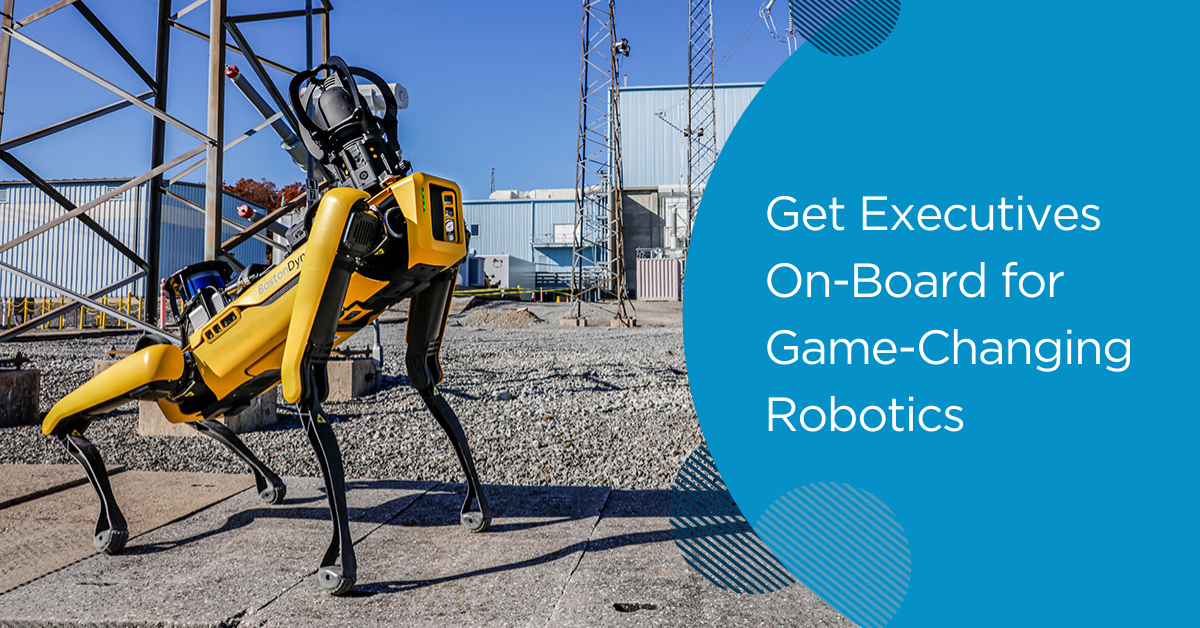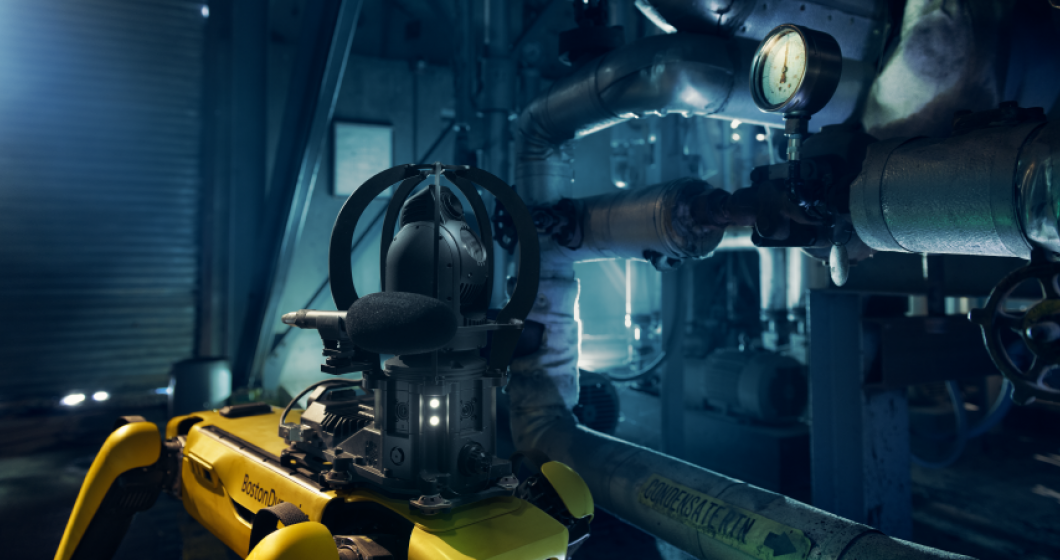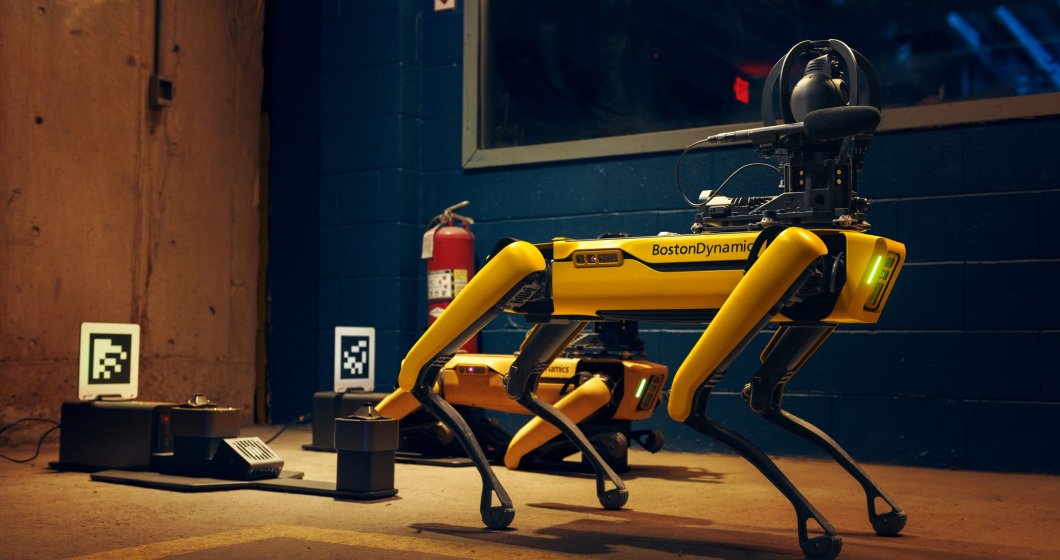
At first, it’s not quite clear what you’re looking at. The yellow robots, sitting in silence, are lined up so closely that they almost resemble deck chairs stacked on top of one another. Then, in time with the music, their arms shoot out into a fluid series of patterns, giving the appearance of a single, many-armed robot peacocking for the camera. Finally, the seven Spots separate, synchronizing their steps and appearing to play off of one another’s dance moves.








